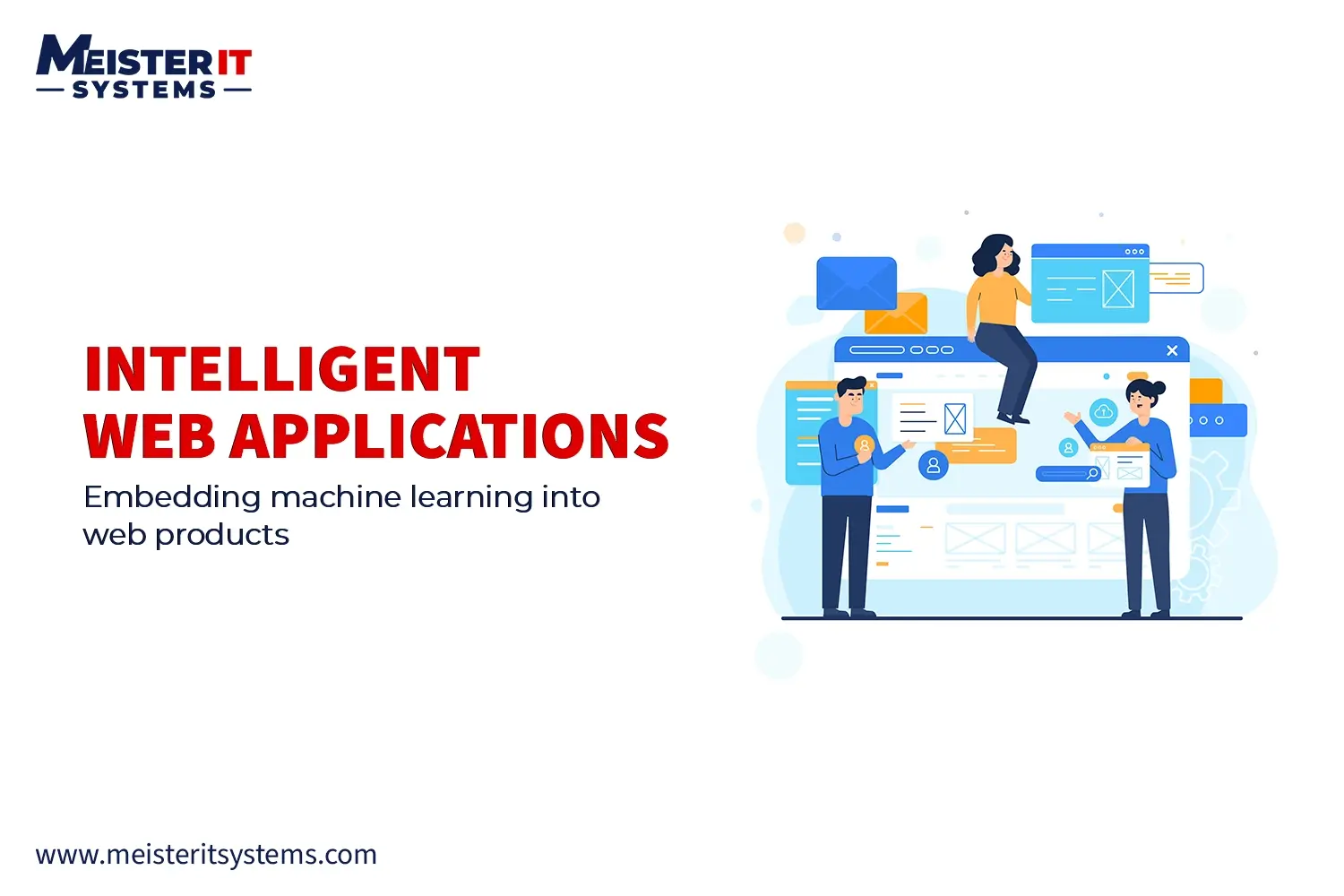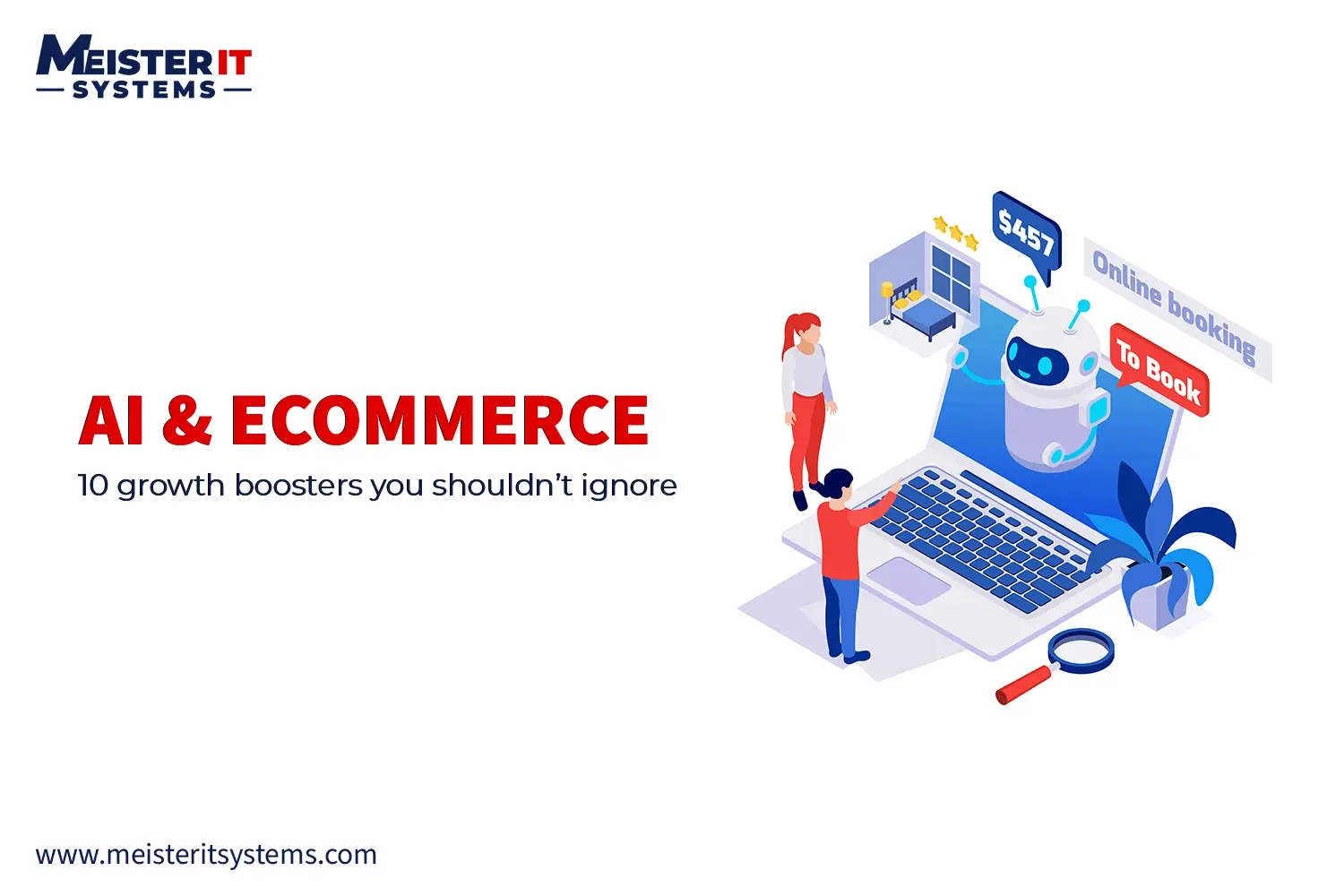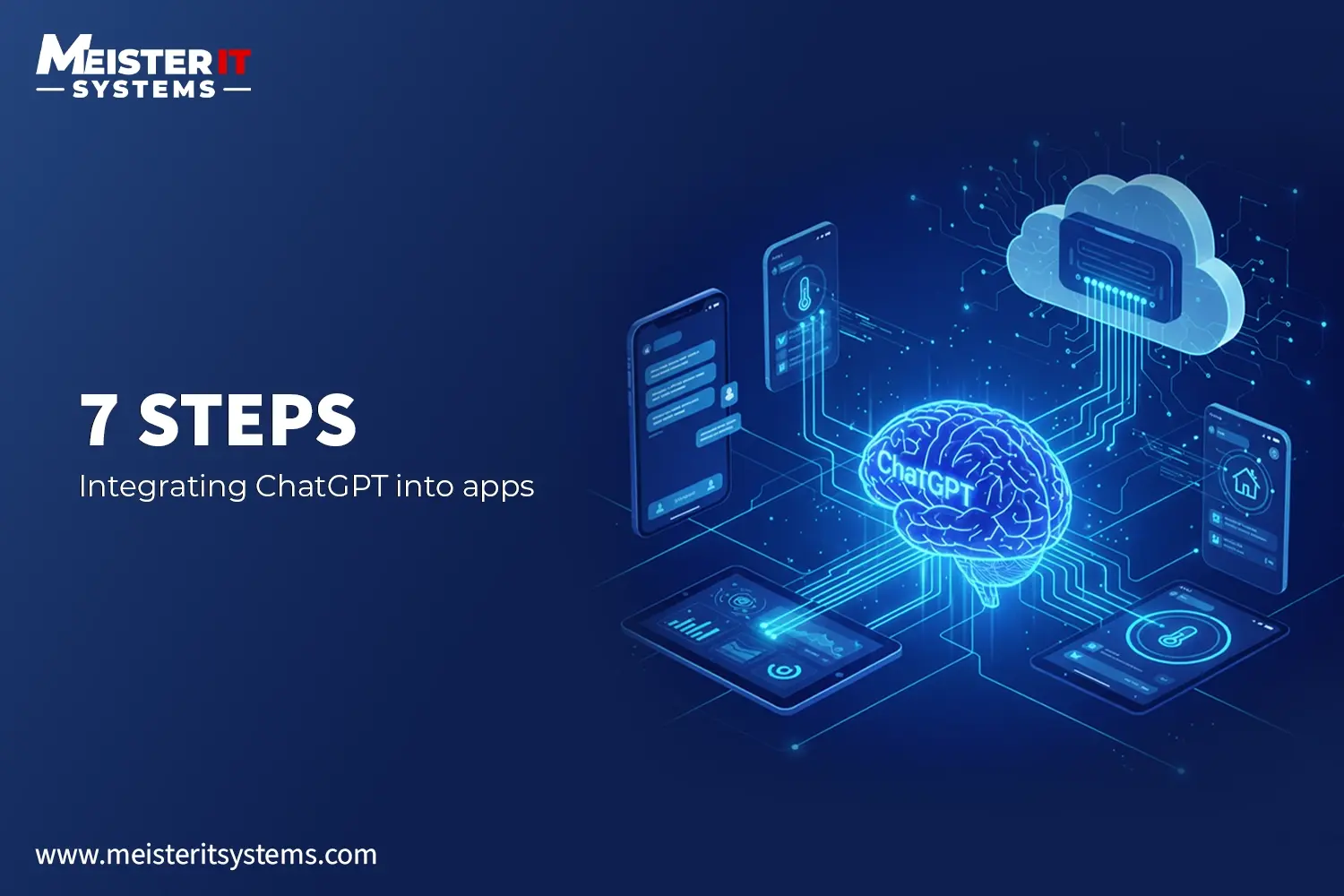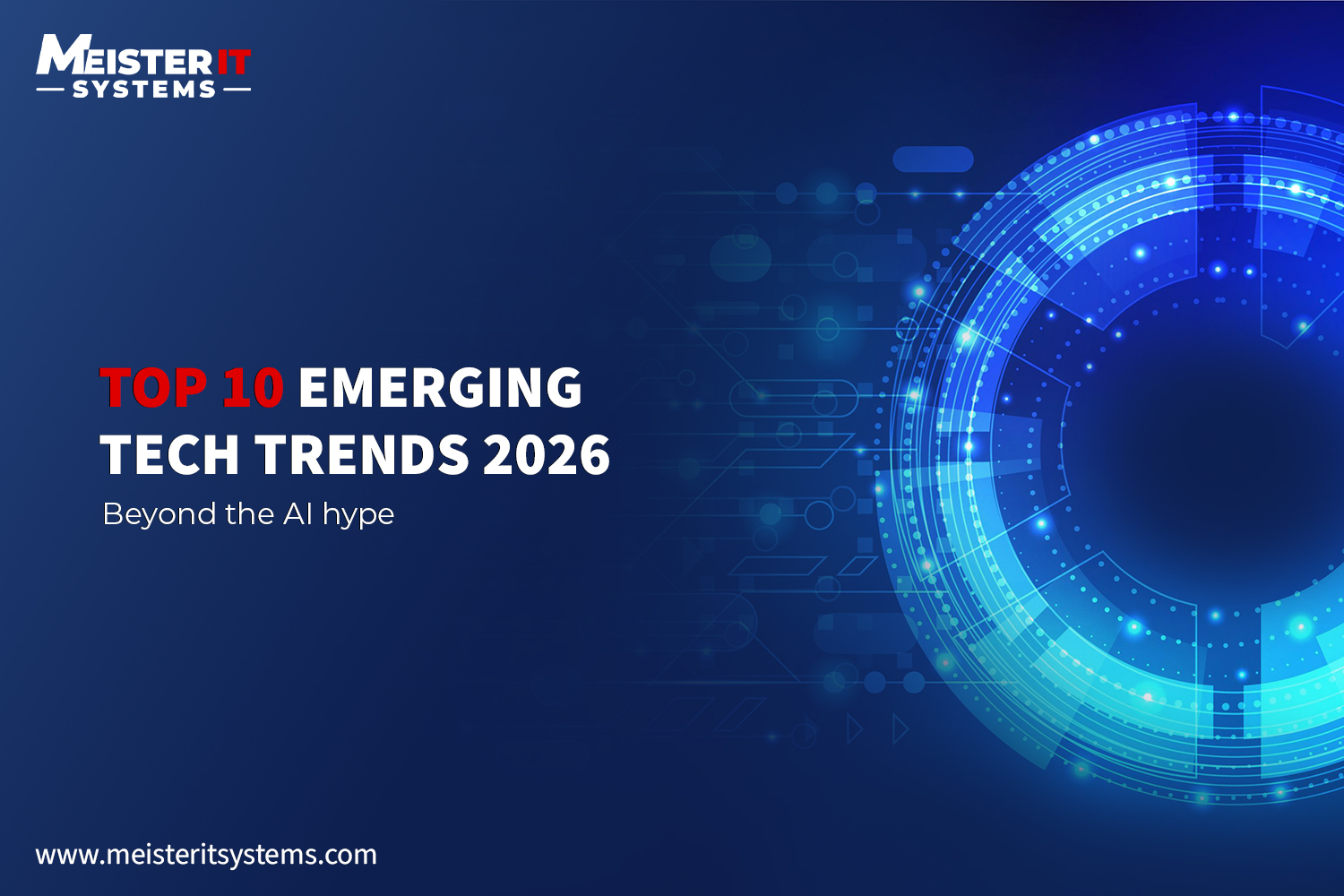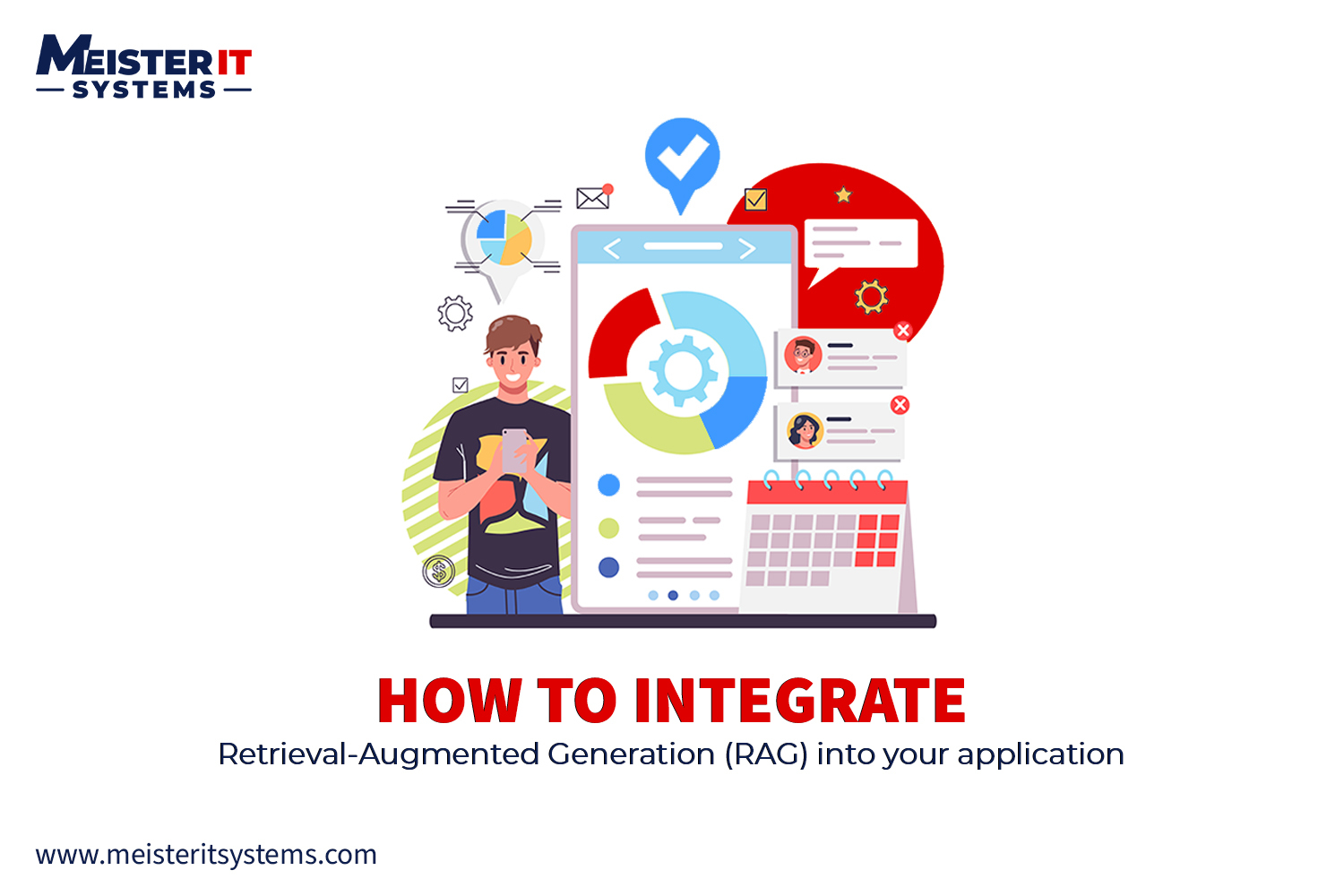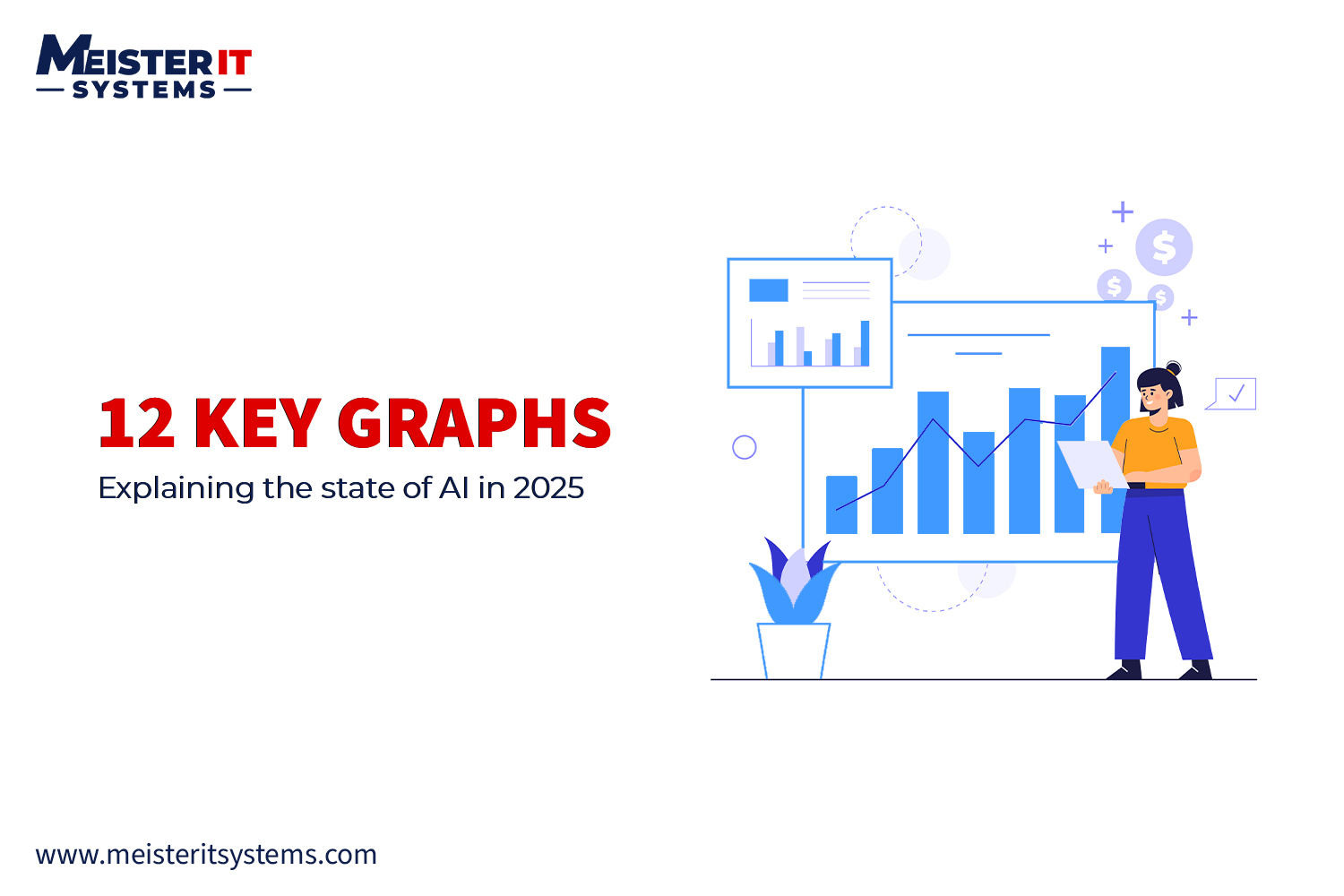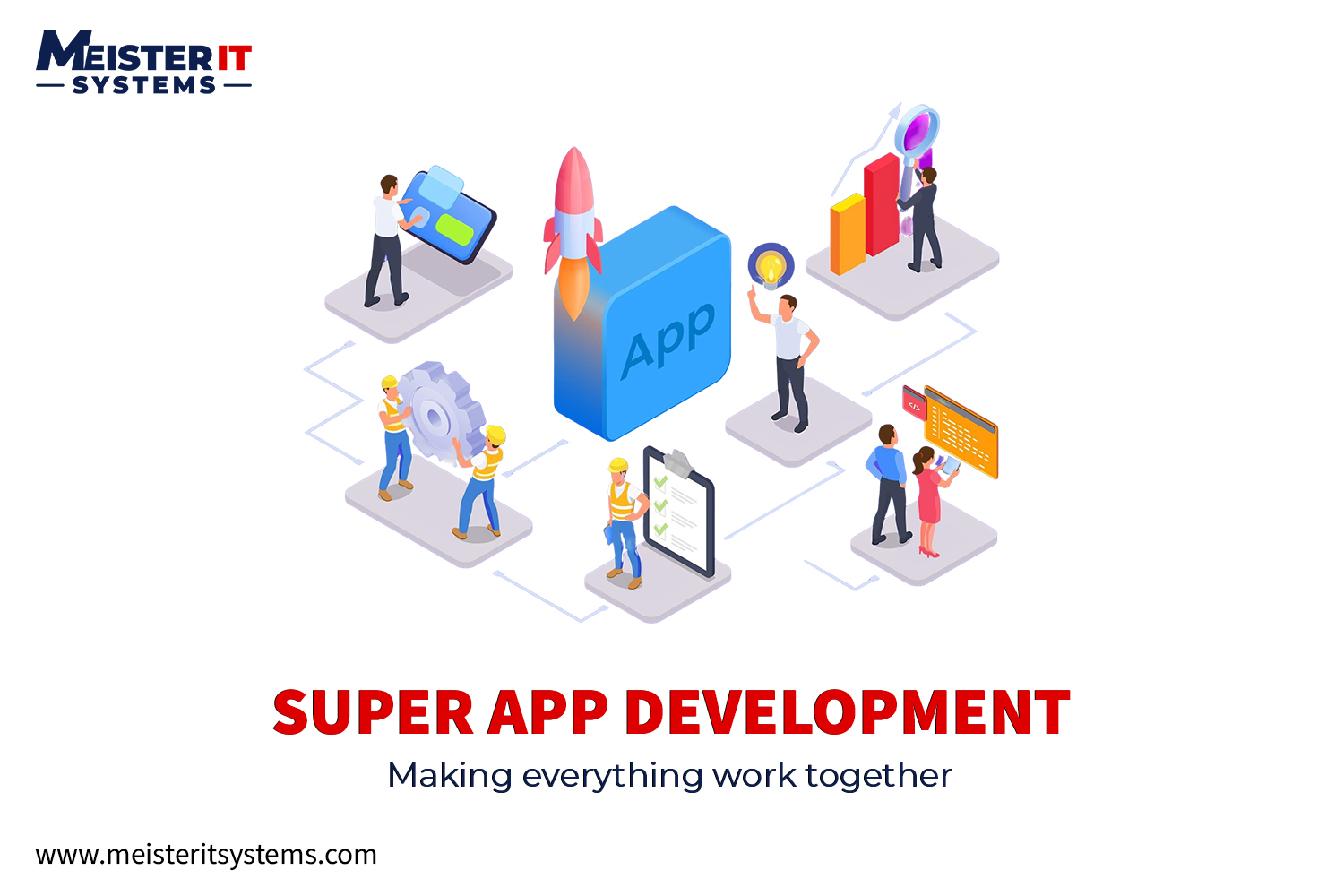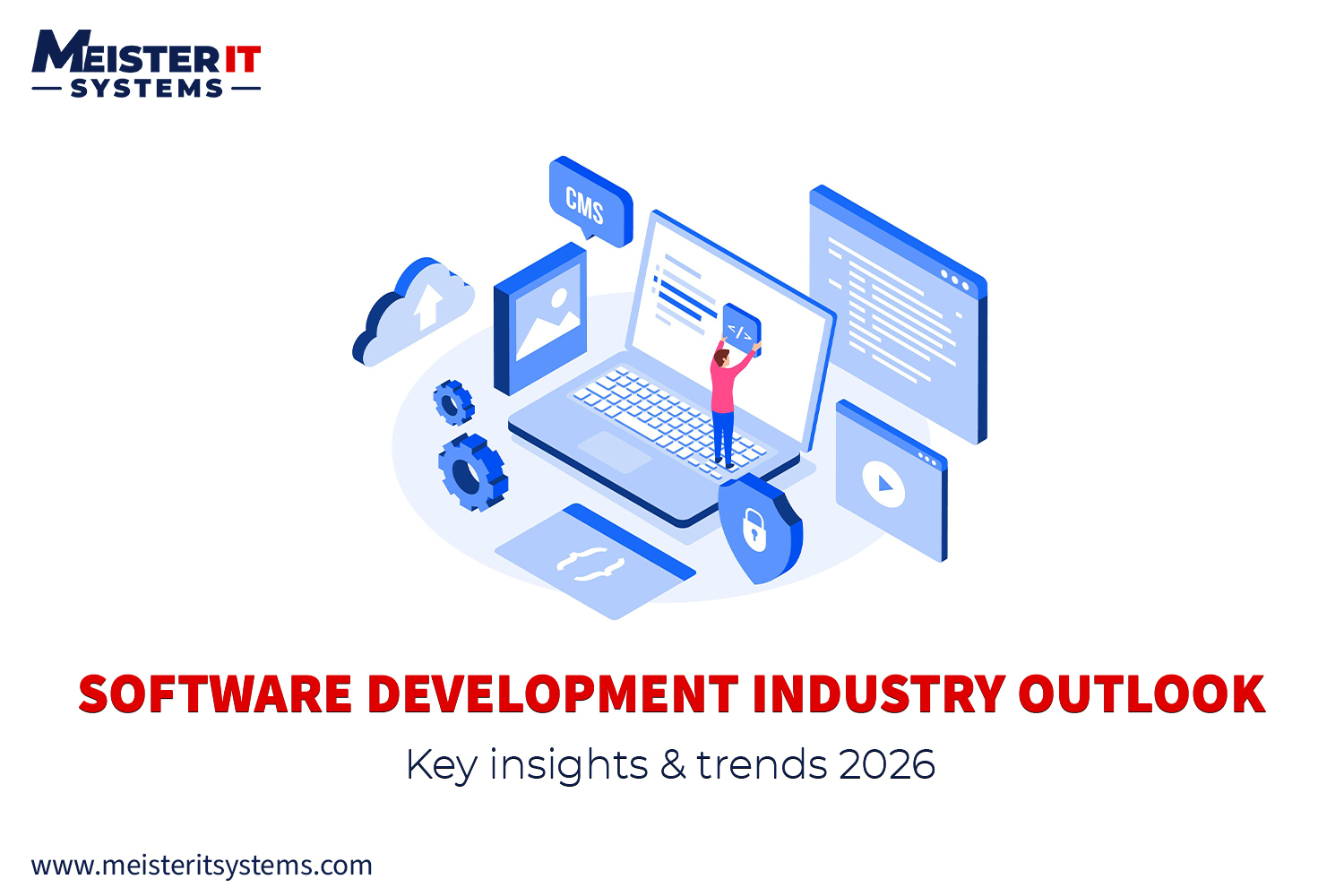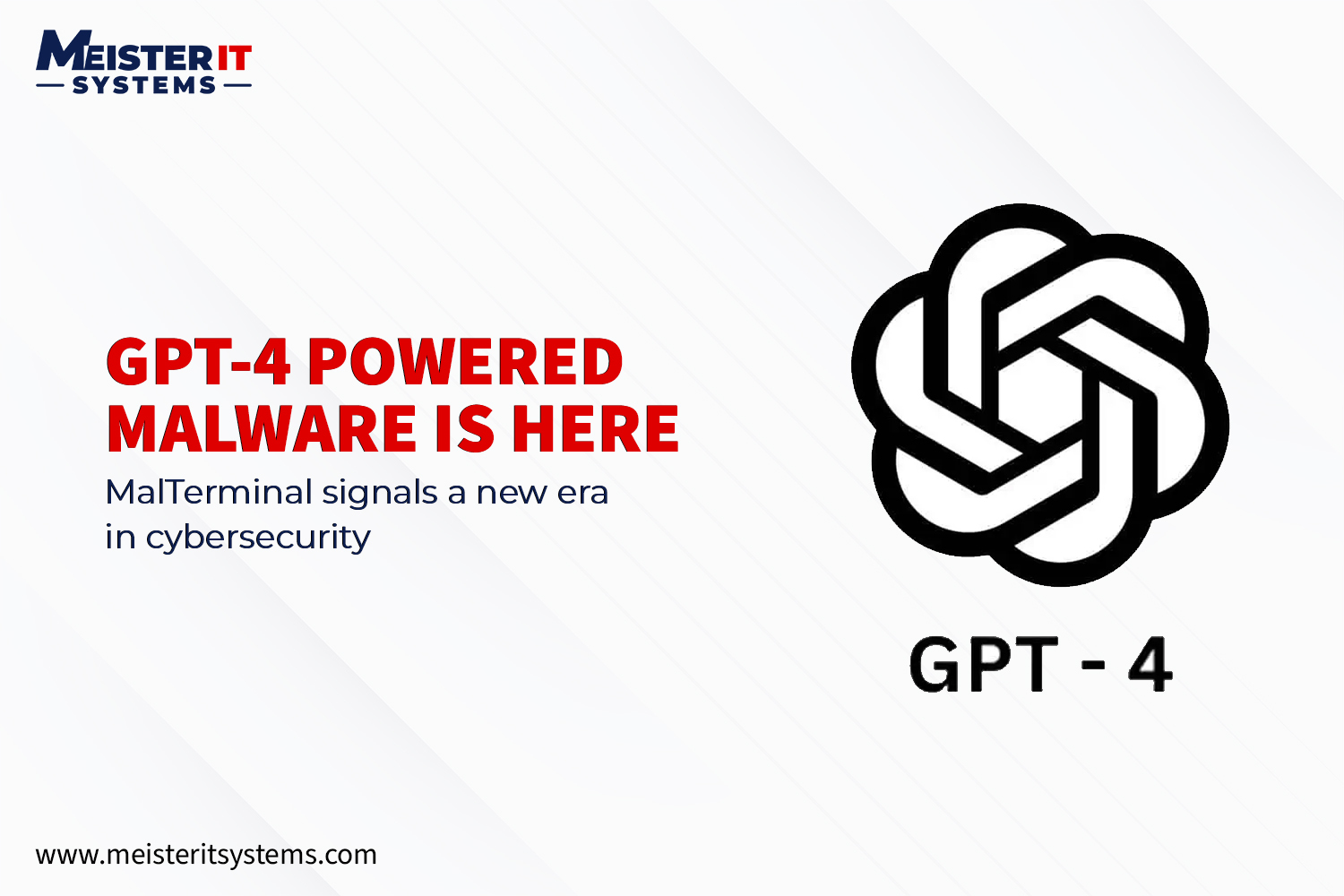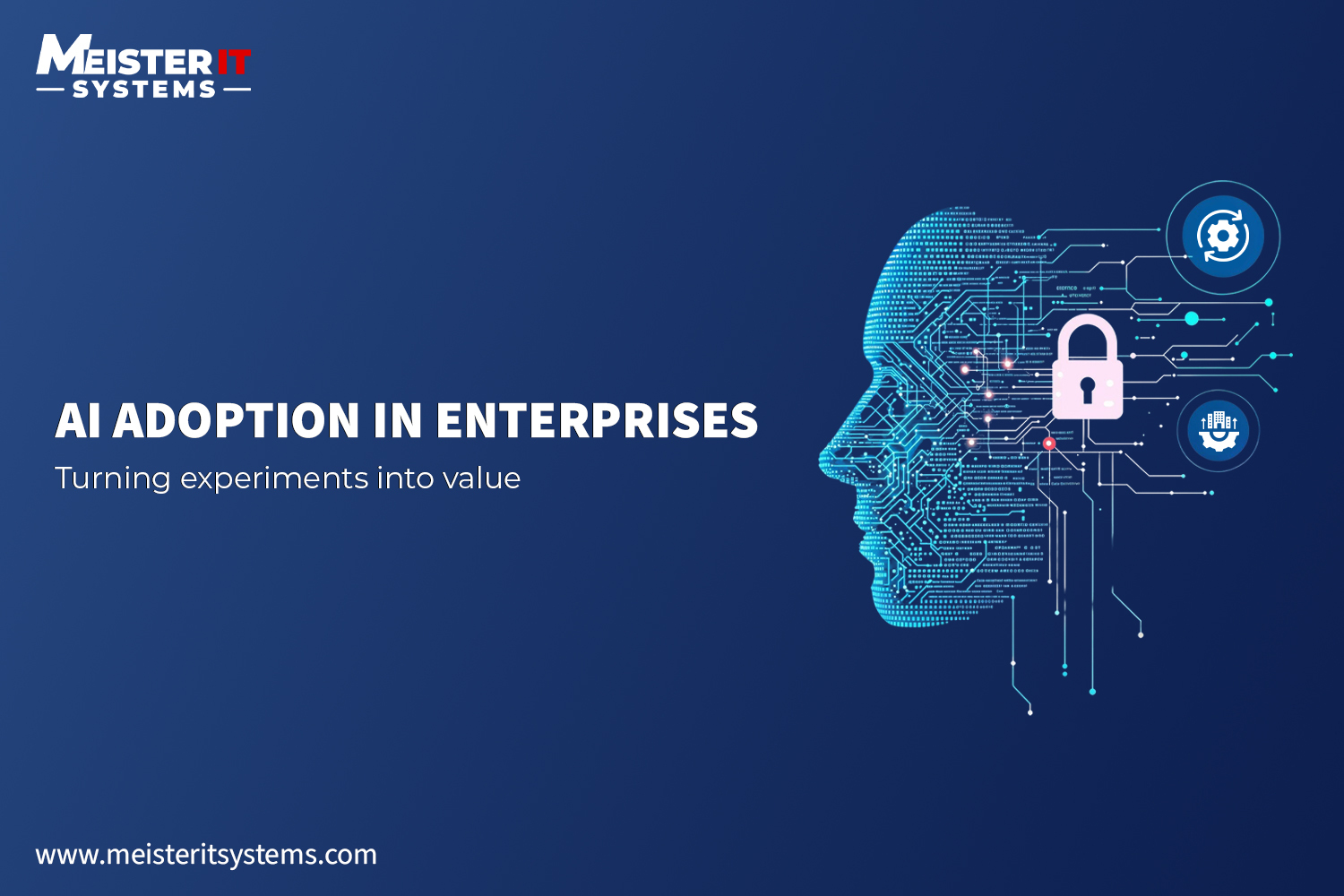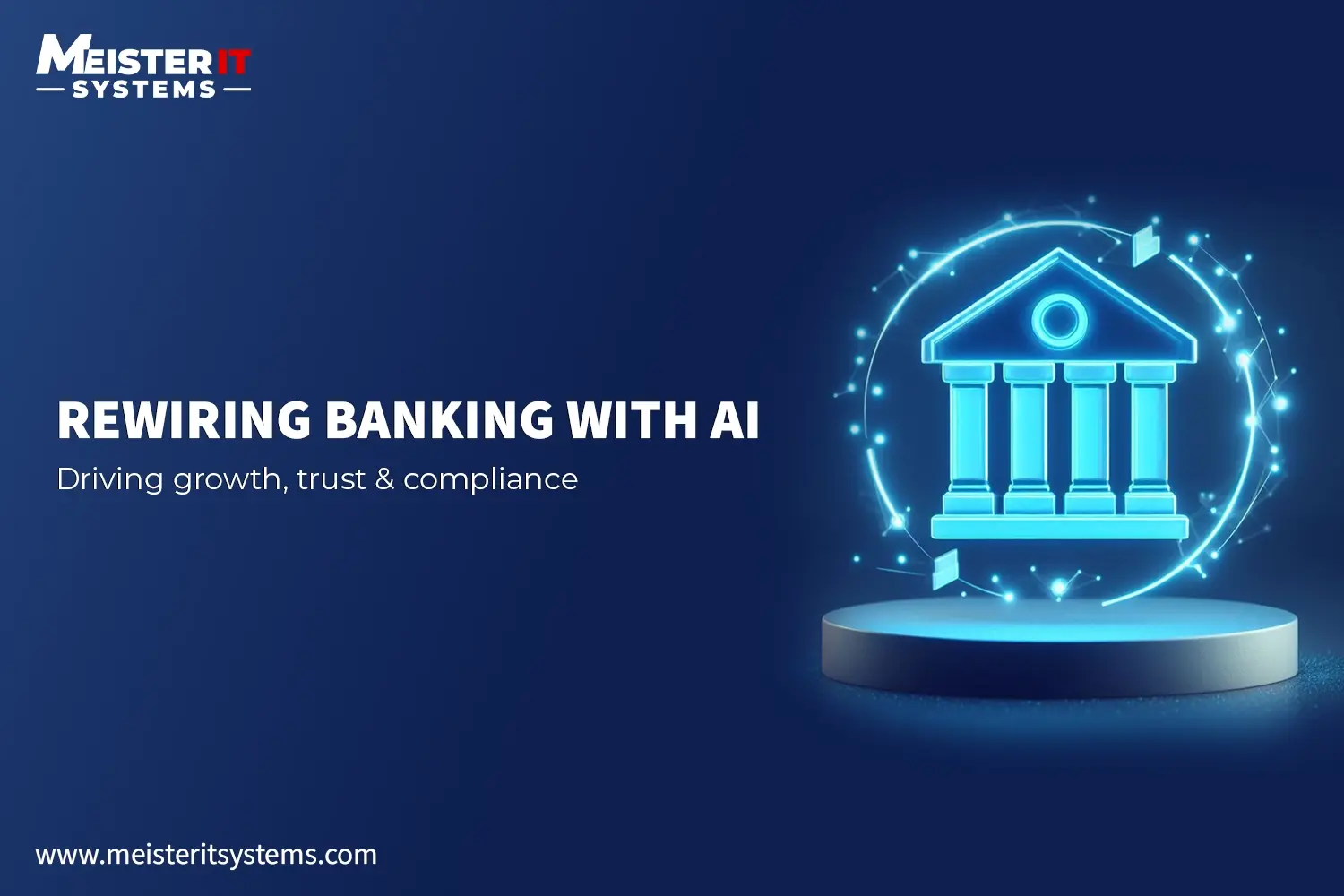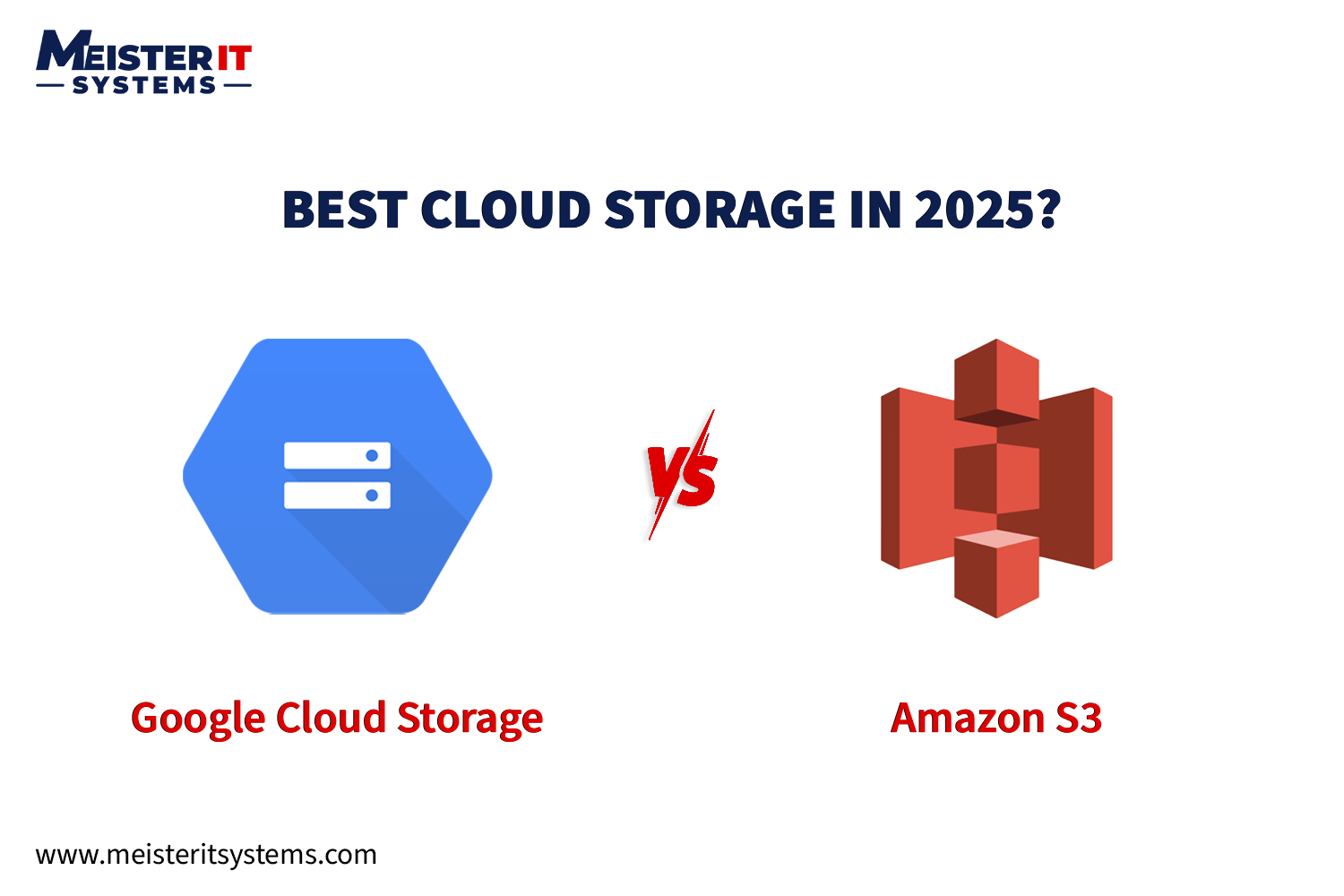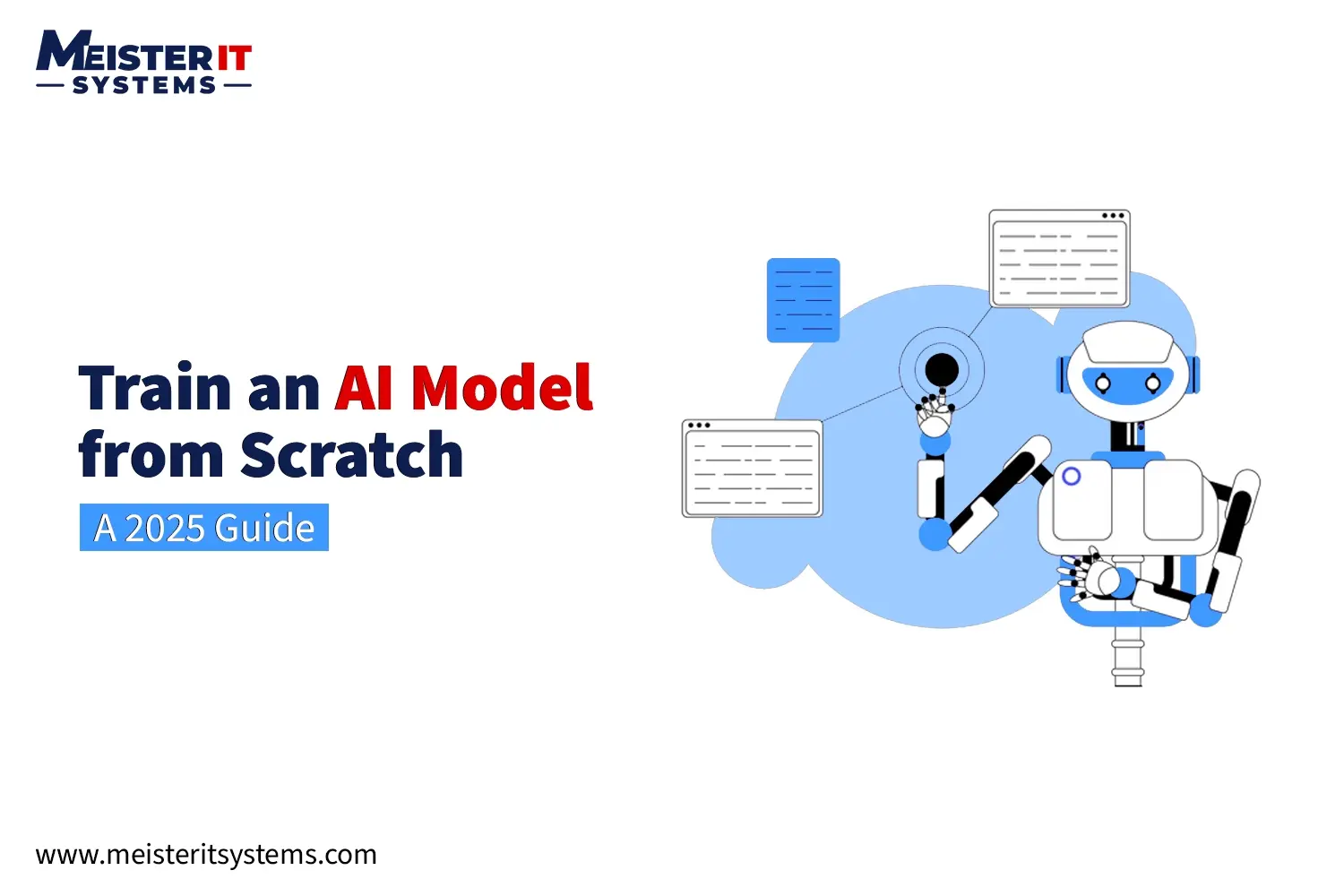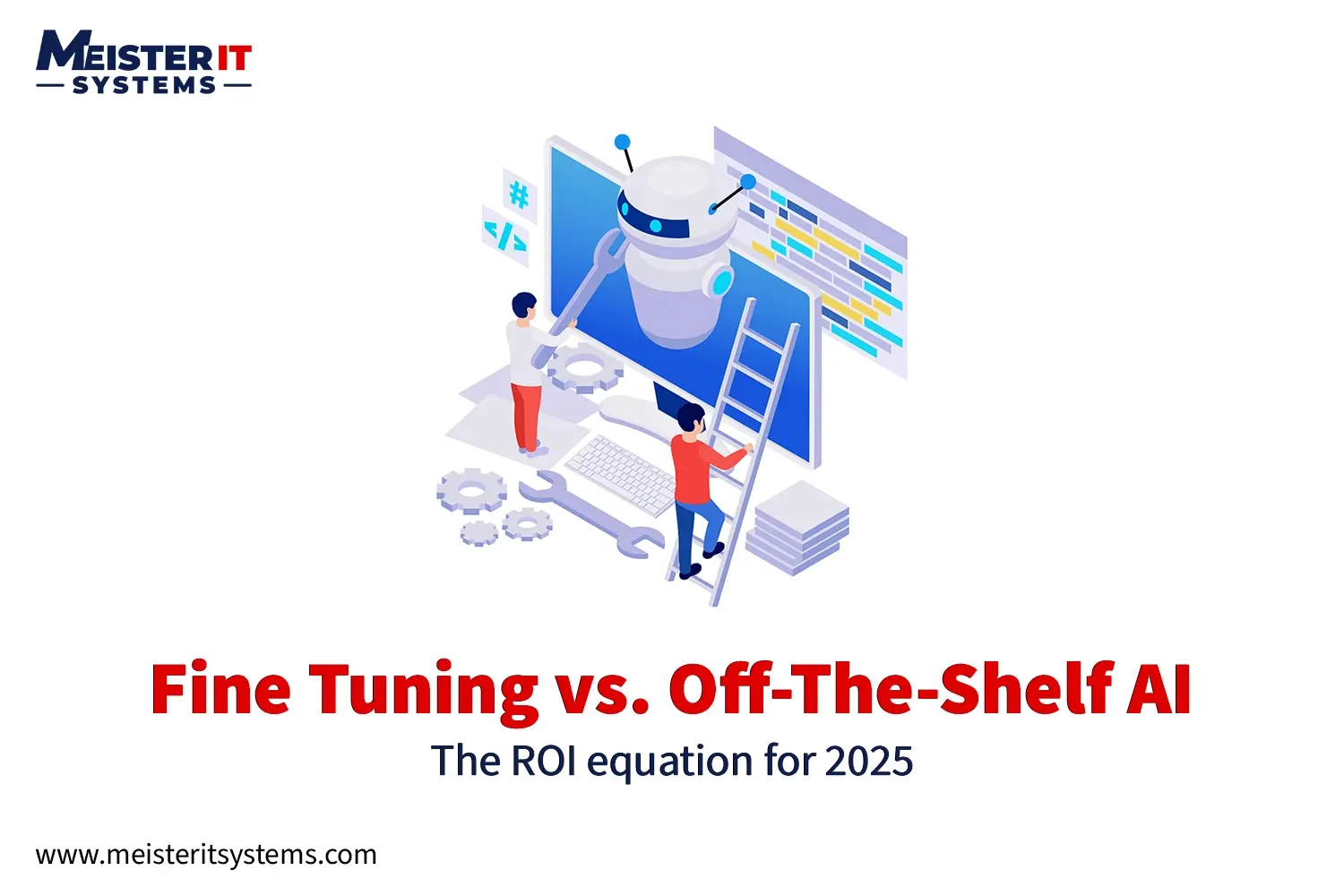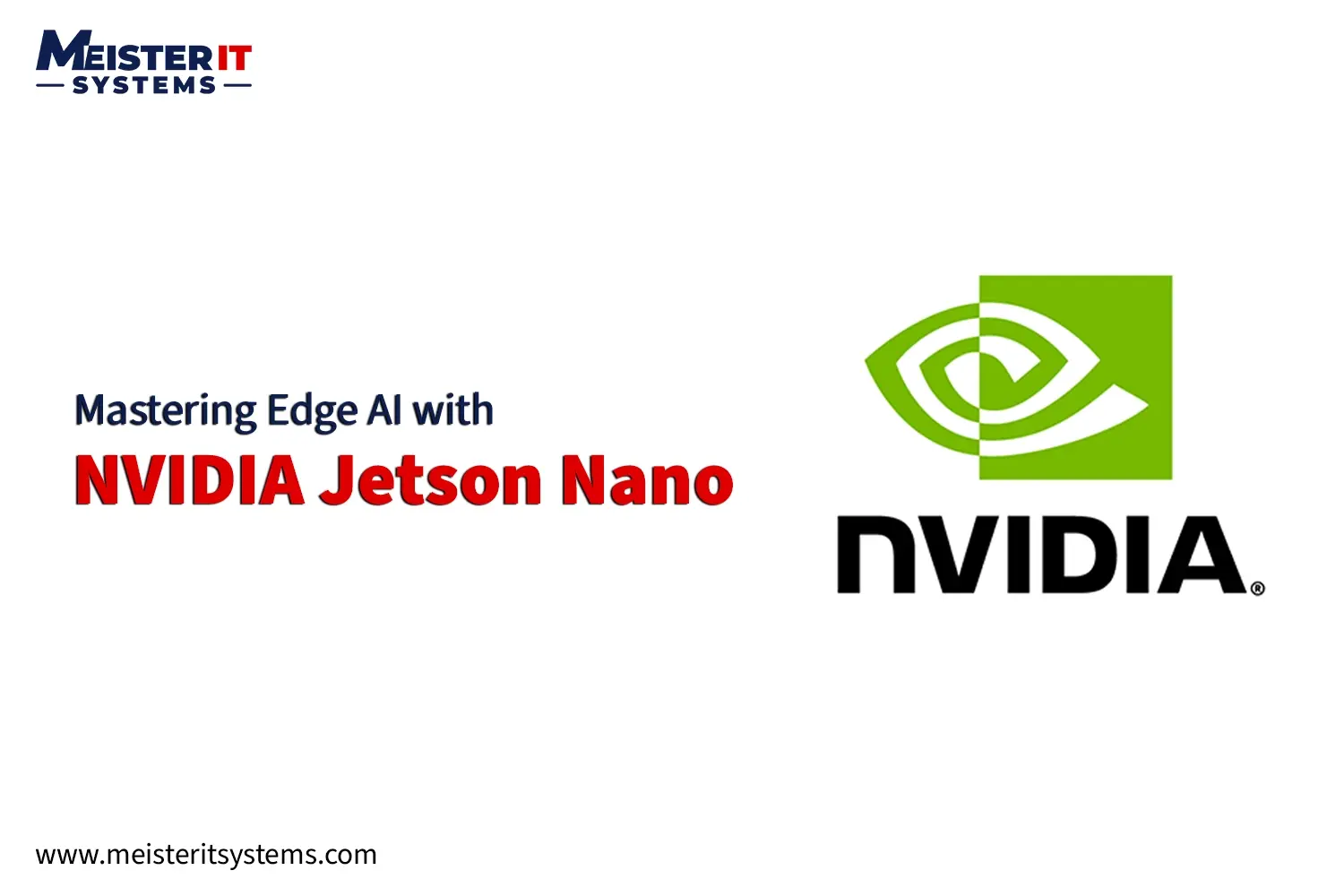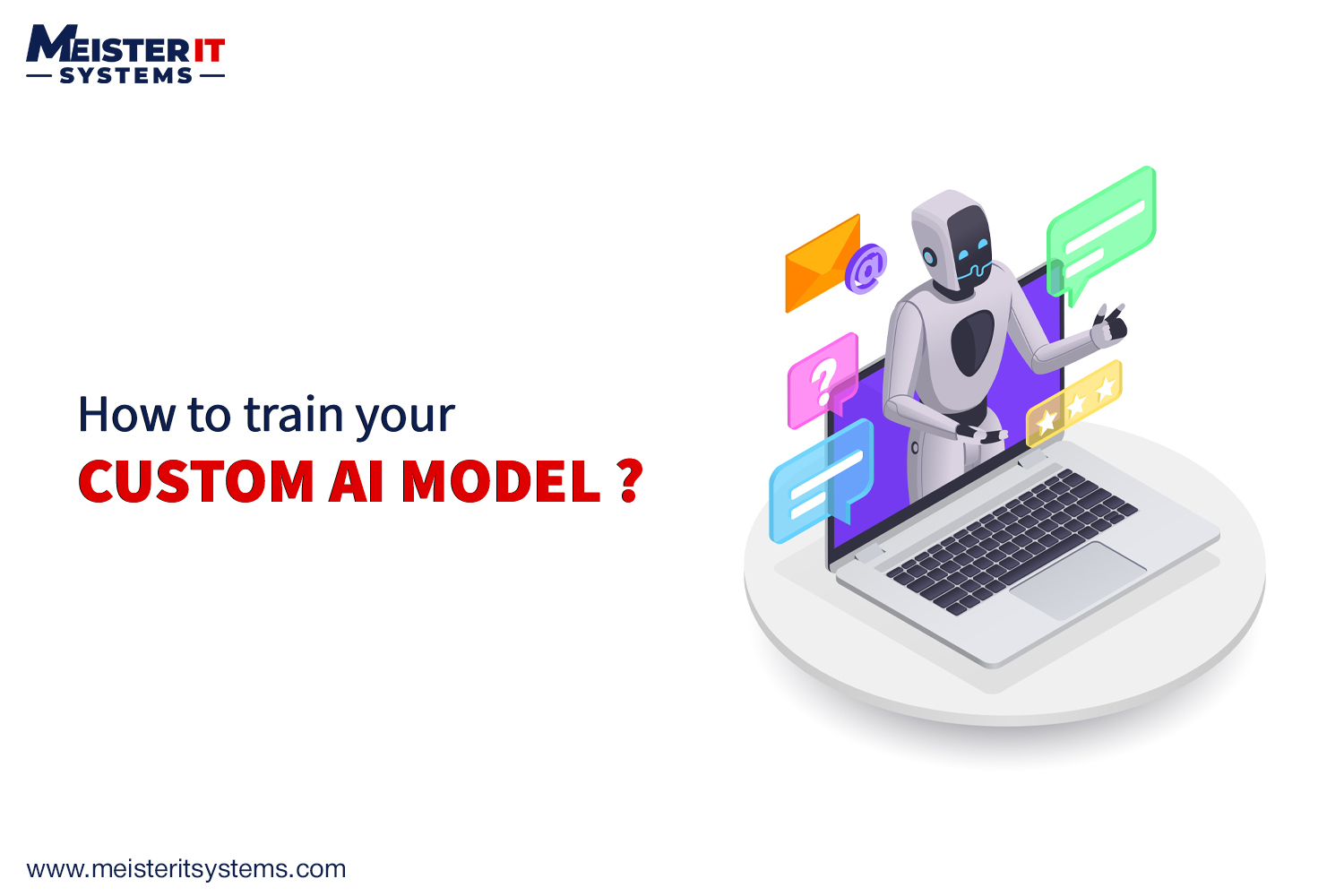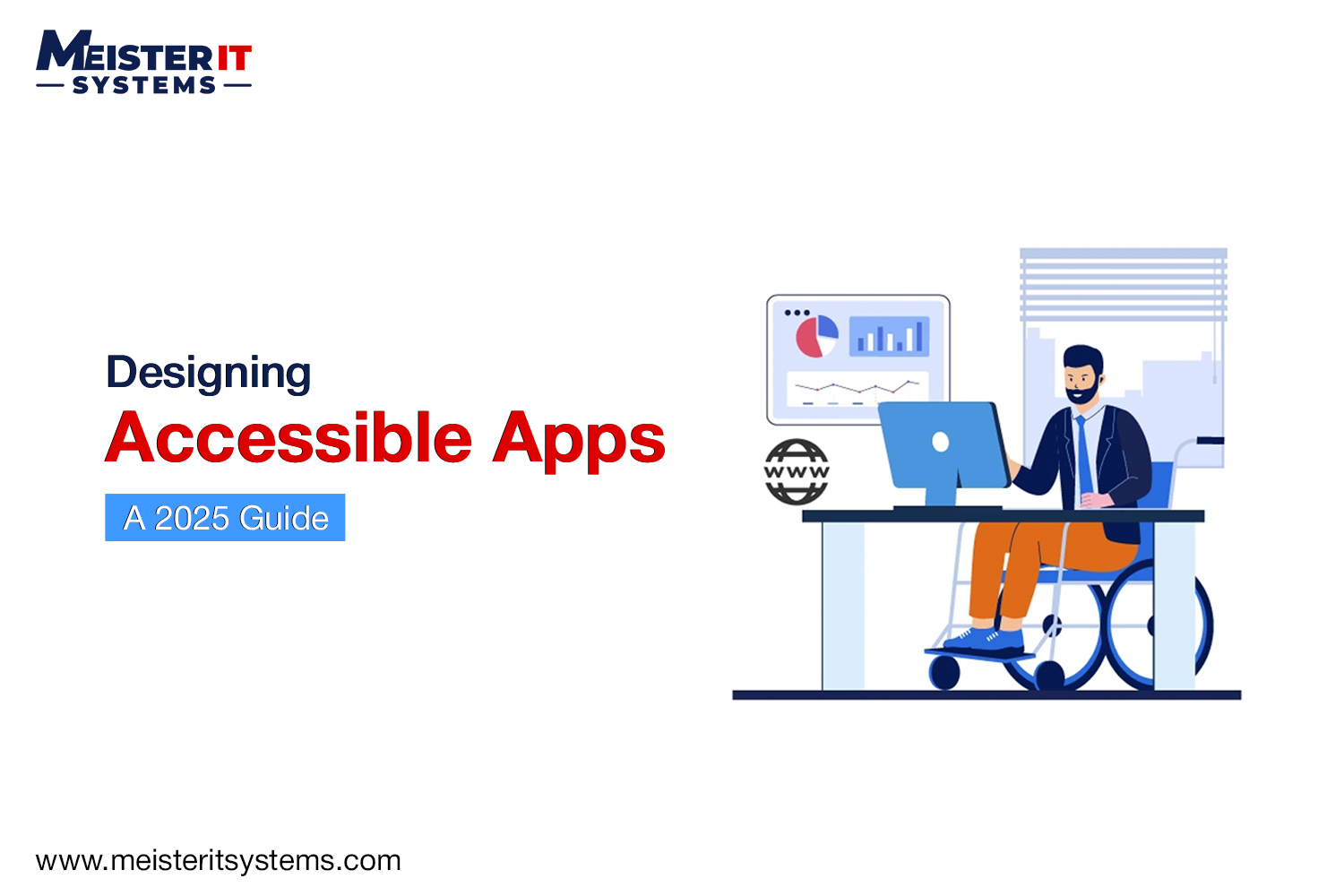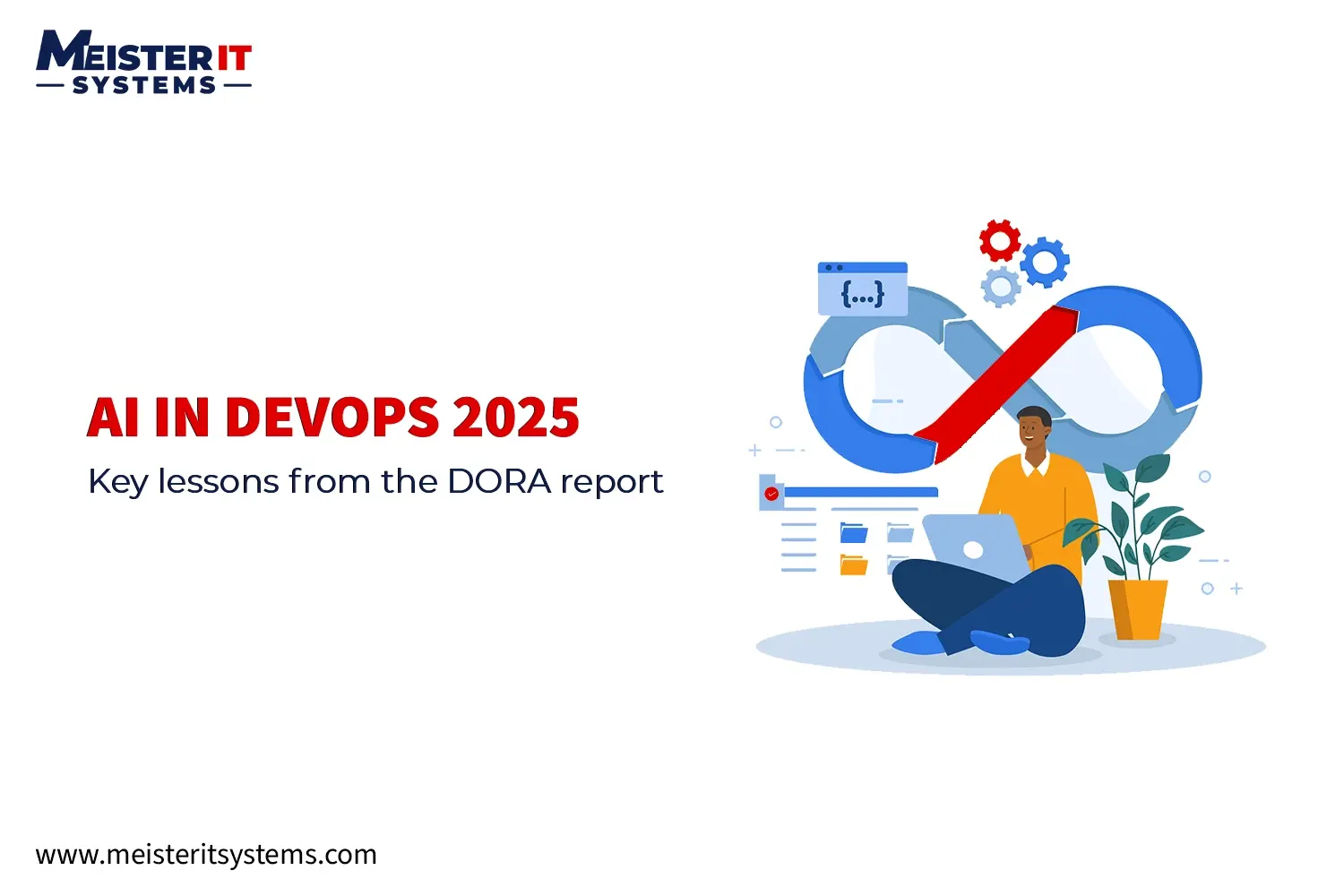
Key Takeaways
- AI boosts DevOps performance but cannot fix weak processes
- Measure DevOps metrics to see AI’s real impact
- Collaboration is essential for AI DevOps success
- Start with high-impact tasks and scale effectively with MeisterIT Systems
Did you know?
Nearly 90% of tech teams now use AI in some part of their DevOps process, yet fewer than half can measure its true impact.
In 2025, AI has become a cornerstone of DevOps, helping teams speed up releases and improve reliability. Yet, only top-performing teams see measurable gains. The reason? AI amplifies strengths but cannot fix weak processes.
This article explores the DORA metrics that show how AI boosts performance and provides actionable steps for AI-driven DevOps workflows.
Understanding DevOps Performance Metrics in 2025
To understand the real impact of AI in DevOps, it is helpful to recognize the key metrics that matter most. The DORA 2025 Report focuses on four critical measures:
| Metric | Definition | AI Impact Example |
|---|---|---|
| Deployment Frequency | How often do teams release code | AI automates pipelines, enabling daily releases (vs. weekly). |
| Lead Time for Changes | Time from commit to deployment | Predictive analytics cuts lead time by 30%. |
| Change Failure Rate | % of deployments causing issues | AI quality checks reduce failures from 15% to 5%. |
| Time to Restore Service | Time to fix production issues | Self-healing AI shortens recovery from hours to minutes. |
How AI Helps in DevOps
- Reduces human error through automated code reviews
- Predicts potential issues using historical data
- Optimizes CI/CD pipelines for speed and reliability
Example: MeisterIT Systems’ AI tools streamlined a client’s CI/CD pipeline, reducing lead time by 40%.
Key Findings: AI Adoption in DevOps
The 2025 DORA Report shows that AI adoption in DevOps is growing quickly but unevenly. Not every team is at the same stage of adoption. Some organizations have fully integrated AI, while others are still experimenting.
Here are the main trends:
1. AI Tools in Action
Teams are using AI for code completion, automatic quality checks, incident prediction, and CI/CD pipeline optimization. AI suggestions help developers write cleaner code faster, while automated pipelines reduce manual effort.
2. Internal Platforms
AI is being used to improve internal tools that support DevOps workflows. For example, AI can recommend configuration changes in internal dashboards or automate maintenance tasks, freeing up teams for higher-value work.
3. Impact on Performance
Dedicated development teams using AI report faster release cycles, fewer deployment failures, and better overall product quality. These improvements lead to higher customer satisfaction and more predictable delivery timelines.
Top 3 Lessons for Tech Leaders: DORA Report 2025
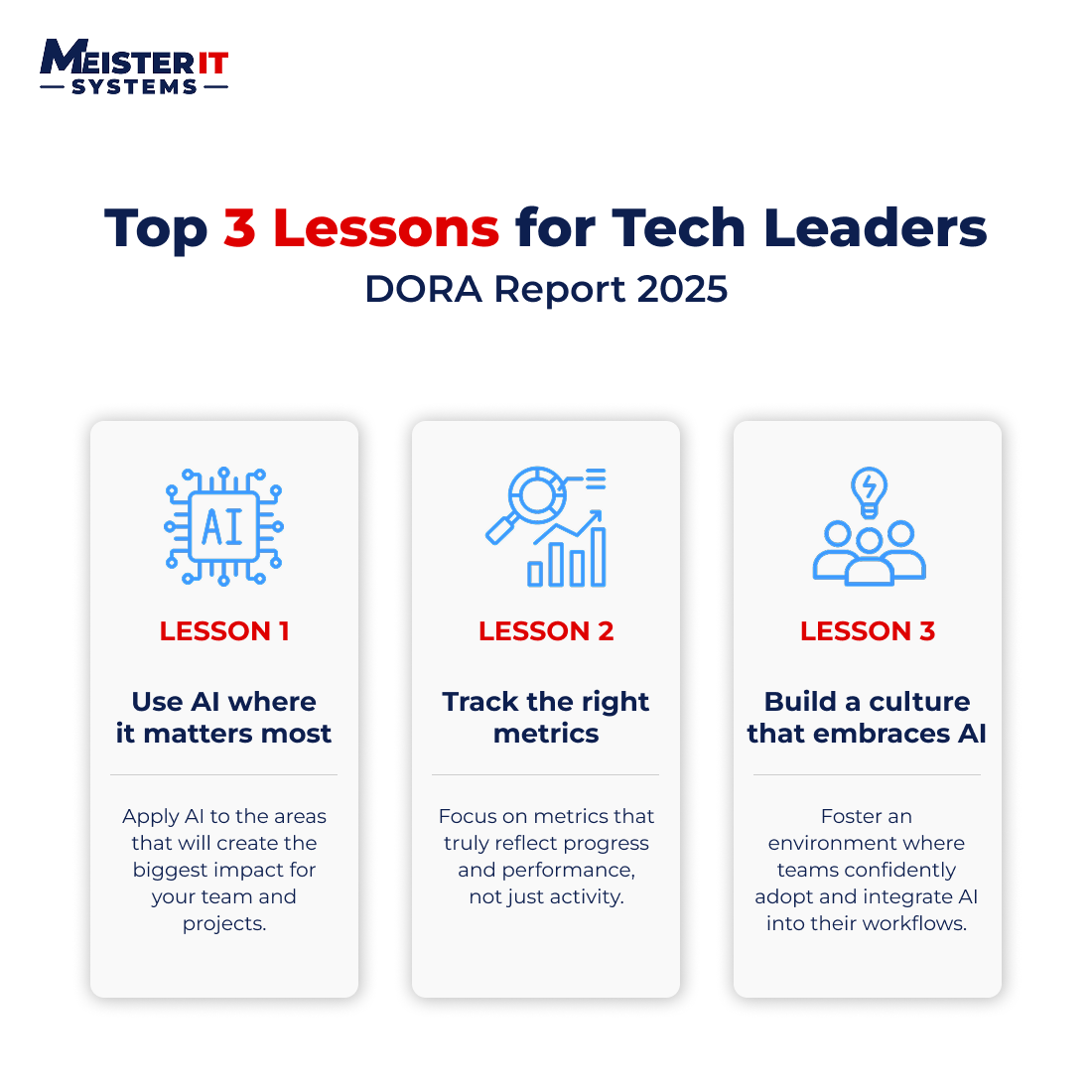
The DORA 2025 Report offers practical lessons for leaders who want to get AI adoption right:
Lesson 1: Use AI Where It Matters Most
Focus on tasks that have the biggest impact, like testing, monitoring, or repetitive CI/CD steps. The AI capabilities model can guide these decisions.
Lesson 2: Track the Right Metrics
Measure AI’s effect on software delivery throughput and product performance. Without clear metrics, improvements are hard to see.
Lesson 3: Build a Culture That Embraces AI
Upskill teams, encourage experimentation, and make sure everyone is aligned. AI works best when developers, operators, and product teams work together.
Practical Steps to Implement AI in DevOps
If your organization is just starting with AI adoption, these steps can help make the process effective:
Step 1: Select the Right Tools
Evaluate AI solutions that integrate with your existing internal platforms. The goal is to enhance workflows, not create new bottlenecks.
Step 2: Automate Wisely
Start with high-impact tasks that reduce repetitive work or prevent errors. For example, automated testing, deployment scripts, and predictive monitoring can deliver immediate benefits.
Step 3: Learn From AI Insights
AI produces a lot of data. Use these insights to improve processes, identify bottlenecks, and guide decision-making.
Step 4: Align Teams
Make sure development, operations, and product teams understand the role of AI and collaborate effectively. Misalignment can reduce AI’s effectiveness and create friction.
Following these steps leads to measurable improvements in software delivery throughput, product performance, and overall efficiency.
Future Trends: AI in DevOps Beyond 2025
The DORA Report also highlights emerging trends that will shape DevOps in the coming years:
- Self-Healing Systems: AI will automatically detect and fix issues in real time, reducing downtime and improving reliability.
- Predictive Quality Management: AI will anticipate potential problems before they reach production, enabling teams to address them proactively.
- Enhanced Internal Platforms: AI will make internal tools smarter, helping teams manage complex workflows more efficiently.
- Stronger Team Alignment: AI will support collaboration by providing data-driven insights that guide decision-making across teams.
These trends show that AI adoption isn’t just about adding new tools. It is about creating smarter workflows, better products, and more aligned teams that can deliver consistently.
Conclusion
The 2025 DORA Report shows that AI-assisted software development is a game-changer for DevOps. Teams that adopt AI see faster releases, better product performance, and stronger team alignment.
If your goal is to improve software delivery throughput and make DevOps workflows smarter, AI is a tool you cannot ignore. MeisterIT Systems helps organizations implement AI-driven DevOps solutions tailored to your teams and products. Accelerate your software delivery, improve reliability, and make smarter decisions with AI.
Contact us today to get started.
FAQs: Your Questions Answered
Q1: What is the main benefit of using AI in DevOps?
A1: AI helps DevOps teams improve speed, reliability, and quality by automating repetitive tasks, predicting risks, and providing actionable insights for smarter decision-making.
Q2: Does AI replace the need for strong DevOps processes?
A2: No. AI amplifies strengths and exposes weaknesses. Teams with weak processes won’t see benefits until foundational practices are improved.
Q3: Which DevOps metrics improve the most with AI?
A3: Key metrics impacted include deployment frequency, lead time for changes, change failure rate, and time to restore service. AI helps teams deploy faster, reduce errors, and recover more quickly from incidents.
Q4: What are the common challenges when adopting AI in DevOps?
A4: Challenges include skill gaps, misaligned teams, and integrating AI into existing internal platforms without creating bottlenecks.
Q5: How should organizations start using AI in DevOps?
A5: Start small, focusing on high-impact areas like automated testing, predictive monitoring, and CI/CD optimizations. Align teams, track the right metrics, and iterate based on insights.
Q6: What trends are shaping the future of AI in DevOps?
A6: Expect self-healing systems, predictive quality management, smarter internal platforms, and improved team alignment through AI-driven insights.



